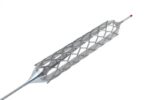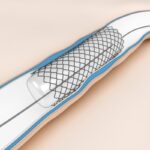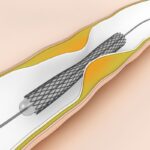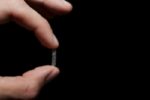Original title: Five-year outcomes in patients with left main disease treated with either percutaneous coronary intervention or coronary artery bypass grafting in the synergy between percutaneous coronary intervention with taxus and cardiac surgery trial. Reference: Morice MC et al. Circulation. 2014 Jun 10;129(23):2388-94. Current guidelines recommend CABG as the strategy of choice for treating lesions of<a href="https://solaci.org/en/2014/06/19/n-4544/" title="Read more" >...</a>
Angioplasty in sirolimus – eluting stent restenosis is safe and effective beyond the change of drug.
Original title: Sirolimius-eluting versus paclitaxel-eluting stents in diabetic and non-diabetic patients within sirolimus-eluting stents restenosis: Results from the ISAR-DESIRE 2 trial. Reference: Sebastian Kufner, et al. Cardiovascular Revascularization Medicine 2014, 15:69-75. DES restenosis has always generated a challenge and a puzzle when defining the strategy of revascularization by angioplasty: A quite used concept was to switch to<a href="https://solaci.org/en/2014/05/06/n-4432/" title="Read more" >...</a>
Everolimus-eluting stent and DEB in restenosis for BMS. Good results of both with some expected differences.
Original title: A Randomized Comparison of Drug-Eluting Balloon Versus Everolimus-Eluting Stent in Patients With Bare-Metal Stent In-Stent Restenosis: The RIBS V Clinical Trial. Reference: Fernando Alfonso et al. J Am Coll Cardiol. 2014; Epub ahead of print. Drug-eluting stents (DES) have proven to be superior in terms of restenosis than bare metal stents (BMS). BMS, however due<a href="https://solaci.org/en/2014/01/22/n-4173/" title="Read more" >...</a>
Everolimus -eluting stent to 3 years, most security was the key difference.
Original title: Everolimus-eluting stents in patients undergoing percutaneous coronary Intervention: Final 3-year results of the Clinical Evaluation of the XIENCE V Everolimus Eluting Coronary Stent System in the Treatment of Subjects With de Novo Native Coronary Artery Lesions trial. Reference: Sorin J. Brener et al. Am Heart J 2013;0:1-8. The XIENCE stent (Abbott Vascular, Santa Clara, CA) is<a href="https://solaci.org/en/2013/12/10/n-4138/" title="Read more" >...</a>
Drug eluting balloon followed BMS versus DES in de novo lesions
Original title: Elutax paclitaxel-eluting balloon followed by bare-metal stent compared with Xience V drug-eluting stent in the treatment of de novo coronary stenosis: A randomized trial. Reference: Francesco Liistro et al. Am Heart J 2013;166:920-6. Recently, drug eluting balloons (DEB) have emerged as a potential alternative to drug-eluting stents (DES). Paclitaxel is an appropriate drug for DEBs given<a href="https://solaci.org/en/2013/12/03/n-4117/" title="Read more" >...</a>
Everolimus Eluting Stent in multiple vessels with short SYNTAX score
Original title: A Clinical and Angiographic Study of the XIENCE V Everolimus-Eluting Coronary Stent System in the Treatment of Patients With Multivessel Coronary Artery Disease. The EXECUTIVE (EXecutive RCT: Evaluating XIENCE V in a Multi Vessel Disease) Trial. Reference: Flavio Ribichini et al. J Am Coll Cardiol Intv 2013. Article in press. Drug-eluting stents (DES ) have emerged<a href="https://solaci.org/en/2013/09/24/n-3641/" title="Read more" >...</a>
DES versus Bare in primary angioplasty at five years. Initial advantage is reducing
Original: title Long-Term Outcome After Drug-Eluting VersusBare-Metal Stent Implantation in Patients WithST-Segment Elevation Myocardial Infarction. 5 Years Follow-Up From the Randomized DEDICATION (Drug Elution and DistalProtection in Acute Myocardial Infarction) Trial. Reference: Lene Holmvang et al. J Am CollCardiolIntv 2013, article in press. Primary angioplasty reduced mortality and reinfarction compared with thrombolytics in patients experiencing an ST<a href="https://solaci.org/en/2013/07/05/n-3410/" title="Read more" >...</a>
Safety and superior effectiveness over two years in femoropopliteal region with drug-eluting stents
Original title: Sustained safety and effectiveness of paclitaxel-eluting stents for femoropopliteal lesions: two-year follow-up from the Zilver PTX randomized and single-arm clinical studies. Reference: Michael D. Dake et al. J Am Coll Cardiol 2013. Article in press. Studies with long-term monitoring showed mainly the limited permeability of balloon angioplasty, especially over challenging injuries such as total occlusions or<a href="https://solaci.org/en/2013/05/13/n-2731/" title="Read more" >...</a>
More evidence for drug eluting balloons in the femoropopliteal region
Original title: 2-Year Results of Paclitaxel-Eluting Balloons for Femoropopliteal Artery Disease. Evidence From a Multicenter Registry. Reference: Antonio Micari et al. J Am Coll Cardiol Intv 2013;6:282–9. Paclitaxel-eluting balloons appear safe and effective for treating atherosclerotic lesions in the femoropopliteal region, leaving the stent only as a rescue strategy against a suboptimal outcome. However, the vast majority of<a href="https://solaci.org/en/2013/04/20/n-2878/" title="Read more" >...</a>
First results of bioabsorbable metal scaffolds DREAMS
Original title: Safety and performance of the drug-eluting absorbable metal scaffold (DREAMS) in patients with de-novo coronary lesions: 12 month results of the prospective, multicentre, first-in-man BIOSOLVE-I trial. Reference: Michael Haude et al. Lancet 2013; 381: 836–44. Bioabsorbable scaffolds could improve vasomotion, remodelling and facilitate new interventions, both percutaneous and surgical. This new bioabsorbable scaffold, different from the<a href="https://solaci.org/en/2013/04/18/n-2871/" title="Read more" >...</a>









